- Region
- Águilas
- Alhama de Murcia
- Jumilla
- Lorca
- Los Alcázares
- Mazarrón
- San Javier
-
ALL AREAS & TOWNS
- AREAS
- SOUTH WEST
- MAR MENOR
- MURCIA CITY & CENTRAL
- NORTH & NORTH WEST
- TOWNS
- Abanilla
- Abarán
- Aguilas
- Alamillo
- Alcantarilla
- Aledo
- Alhama de Murcia
- Archena
- Balsicas
- Blanca
- Bolnuevo
- Bullas
- Cañadas del Romero
- Cabo de Palos
- Calasparra
- Camping Bolnuevo
- Campo De Ricote
- Camposol
- Canada De La Lena
- Caravaca de la Cruz
- Cartagena
- Cehegin
- Ceuti
- Cieza
- Condado de Alhama
- Corvera
- Costa Cálida
- Cuevas De Almanzora
- Cuevas de Reyllo
- El Carmoli
- El Mojon
- El Molino (Puerto Lumbreras)
- El Pareton / Cantareros
- El Raso
- El Valle Golf Resort
- Fortuna
- Fuente Alamo
- Hacienda del Alamo Golf Resort
- Hacienda Riquelme Golf Resort
- Isla Plana
- Islas Menores & Mar de Cristal
- Jumilla
- La Azohia
- La Charca
- La Manga Club
- La Manga del Mar Menor
- La Pinilla
- La Puebla
- La Torre
- La Torre Golf Resort
- La Unión
- Las Palas
- Las Ramblas
- Las Ramblas Golf
- Las Torres de Cotillas
- Leiva
- Librilla
- Lo Pagan
- Lo Santiago
- Lorca
- Lorquí
- Los Alcázares
- Los Balcones
- Los Belones
- Los Canovas
- Los Nietos
- Los Perez (Tallante)
- Los Urrutias
- Los Ventorrillos
- Mar De Cristal
- Mar Menor
- Mar Menor Golf Resort
- Mazarrón
- Mazarrón Country Club
- Molina de Segura
- Moratalla
- Mula
- Murcia City
- Murcia Property
- Pareton
- Peraleja Golf Resort
- Perin
- Pilar de la Horadada
- Pinar de Campoverde
- Pinoso
- Playa Honda
- Playa Honda / Playa Paraíso
- Pliego
- Portmán
- Pozo Estrecho
- Puerto de Mazarrón
- Puerto Lumbreras
- Puntas De Calnegre
- Region of Murcia
- Ricote
- Roda Golf Resort
- Roldan
- Roldan and Lo Ferro
- San Javier
- San Pedro del Pinatar
- Santiago de la Ribera
- Sierra Espuña
- Sucina
- Tallante
- Terrazas de la Torre Golf Resort
- Torre Pacheco
- Totana
- What's On Weekly Bulletin
- Yecla


- EDITIONS:
 Spanish News Today
Spanish News Today
 Alicante Today
Alicante Today
 Andalucia Today
Andalucia Today
article_detail
Spanish News Today Editors Roundup Weekly Bulletin Mar 14
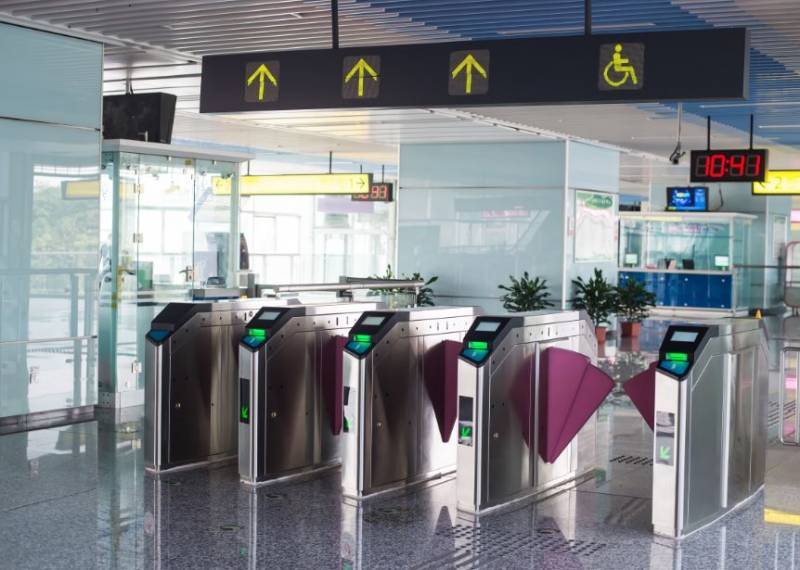
TOP STORIES: "UK to start charging Europeans for entry" & "Changes on the way to Spain environmental stickers for cars"
Storm Konrad brings fresh showers to Spain this weekend, and the rain continues into next week too. It’s just the kind of gentle, persistent rainfall we need here in the south to give a bit of a drink to the parched countryside and to the depleted reservoirs.
This week we have a couple of big news stories for you about ZBEs (explained further down, don’t worry) and ETAs, which is not your Estimated Time of Arrival or even the Basque independentista terrorist group active in the 1990s and early 2000s. Read on to find out more.
UK travel
We’ve known it’s been coming for quite some time, but the deadline is almost here. As of April 2, 2025, European citizens will need to apply for an Electronic Travel Authorisation (ETA) before visiting the UK for short stays of less than six months.
But travellers need not stress – it’s a very straightforward process that’s fairly cheap and covers multiple trips.
This new rule is essentially the flip side of the European Union’s upcoming ETIAS (European Travel Information and Authorisation System), which will require Brits to obtain a visa-waiver to travel to EU countries, including Spain.
In something of a reciprocal move, the UK is introducing the ETA to streamline and secure its borders. The ETA is not a visa, but rather a prior authorisation to enter the country. It’s a simple online application process that costs £10 and can be completed in just a few minutes.

Essentially, if you’re a European citizen planning to visit the UK for a short stay, you’ll need to apply for an ETA before you go. This includes tourists, business travellers, family visitors, students and certain types of workers.
However, there are some exceptions to this rule, including:
- Irish citizens (who are exempt from the ETA requirement)
- Those with a visa or permission to live, work or study in the UK
- Passengers transiting through a UK airport who won’t pass through border control
- Dual citizens with British or Irish citizenship
- Certain groups, such as children travelling on a France-UK school trip or individuals living in Ireland who are travelling from Ireland, Guernsey, Jersey or the Isle of Man
Applying for an ETA is a straightforward process that can be done online through the UK ETA app or on the GOV.UK website. You can apply for yourself or on behalf of others, including children and you’ll need to provide some basic information, such as your passport details and travel plans.
Once you’ve submitted your application, you can expect a response within three working days. If the system doesn’t find any adverse information about you, your ETA will be granted automatically. Otherwise, your application will be reviewed by an officer.
The best part is that an ETA is valid for multiple entries over a period of two years or until your passport expires, whichever is sooner, so you won’t need to go through the rigmarole of applying too often.
There are a couple of things to keep in mind though. Firstly, having an ETA doesn’t guarantee entry into the UK, so make sure you have all the necessary documents and information before you travel.
Secondly, the ETA is not a visa and does not authorise you to spend longer in the UK than 90 days.
The ETA is closely tied to the EU’s ETIAS, which is set to come into force in May 2025. The ETIAS is a 100% electronic system that will require Brits and other non-EU nationals to obtain a visa-waiver before travelling to EU countries.
The ETIAS is designed to provide more information about who is inside EU borders at any given time and to help prevent individuals from overstaying their welcome.
On the road again
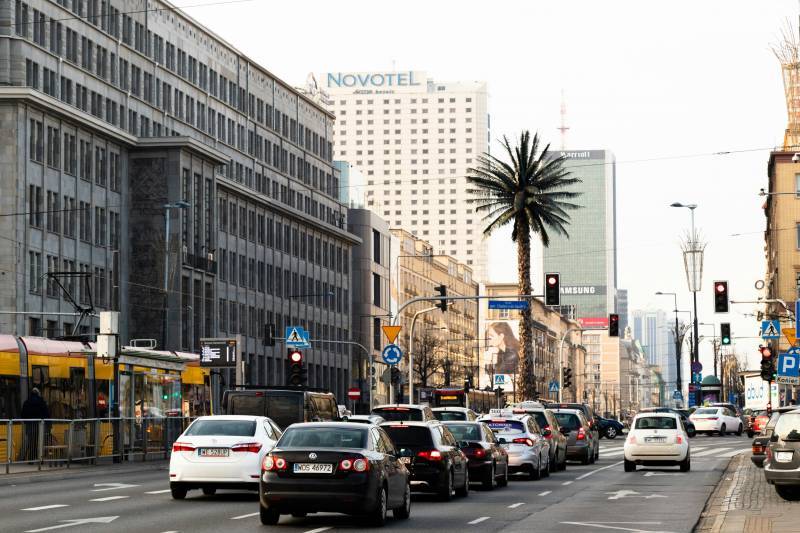
The Spanish government has just come up with a clever way to kill two birds with one stone – making public transport more affordable while also encouraging local authorities to go green.
As of July, discounted public transport will only be available in cities and towns that have fully implemented their Low Emission Zones (ZBEs). It’s a pretty straightforward deal: if your town wants to keep getting subsidies that make public transport cheaper for residents, they need to get their ZBEs up and running.
Right now, the government is still heavily subsidising urban bus and rail travel, but that’s about to change. The Ministry of Transport has announced that from July, the system will be overhauled to focus on helping out vulnerable travellers – like low-income families or people with disabilities – rather than just giving everyone a discount.
But here’s the rather ingenious part: the Ministry is using this change as a chance to nudge municipalities with more than 50,000 inhabitants to finally get their ZBEs off the ground. If they don’t, they’ll miss out on the state subsidy that makes public transport 20-50% cheaper for residents. It’s a pretty strong incentive to get on board with the environmental agenda, which they should have done by now already.
Essentially, cities will need to have a fully functional low-emission zone in place (or at least commit to having one by the end of 2025!) if they want to keep getting state aid to reduce transport costs. It’s a clear message from the government: go green or miss out on the benefits.
The Spanish government is also cracking down on polluting vehicles to help clean up the air in urban areas. If you’re driving a car with a ‘B’ environmental sticker, which means it’s a bigger polluter, you’ll soon face stricter rules in cities like Madrid, Bilbao, Barcelona and Palma de Mallorca.
Some of these cities are even planning to ban B sticker vehicles altogether from 2026 or 2028, so it’s time to start thinking about alternative ways to get around.
It all might seem a bit drastic, but Spain’s ultimate goal, which is in line with EU goals, is to reduce emissions and get people moving in more sustainable ways – think public transport, walking and cycling.
To make this happen, the government is launching a new initiative to support municipal bike-sharing services, like BiciMad in Madrid or Bicing in Barcelona, with a cool €10 million in co-financing assistance.
This will help make cycling a more convenient and affordable option for people who want to ditch their cars and help the environment.
Not only that, but there is also some big news coming from the Directorate General of Traffic (DGT) in Spain this week.
One of the most frustrating things about getting a traffic fine in Spain is the wait – it can take weeks or even months to arrive, which means many people miss out on the chance to pay early and get a 50% discount. But that’s all set to change with the introduction of the new ‘Express Fines’ system.
The idea behind Express Fines is to get notifications of infractions to drivers as quickly as possible – within 48 hours, to be exact. To make this happen, the DGT is encouraging drivers to register for something called the Electronic Road Address (DEV) on their website. It’s a pretty simple process that requires an electronic ID or digital certificate, but it’s worth it for the convenience it offers.
Once you’re registered, you’ll start receiving notifications about any fines via email and SMS almost as soon as they're issued. This means you’ll be able to find out about any infractions in near real-time and take action to resolve the situation quickly. No more waiting around for weeks or months to hear about a fine.
To get started with Express Fines, all you need to do is head to the DGT’s website and sign up for the DEV. Just click on the ‘Registration, modification and deregistration in DEV’ option (or ‘Alta, modificación y baja en DEV’ in Spanish) and follow the prompts to complete your registration. It’s a relatively straightforward process, and it could save you a lot of hassle, and potentially even some money, in the long run.
Don’t forget you can join our Driving in Spain Facebook group for all the latest motoring and travel news
Another new type of visa for foreigners in Spain

Spain is set to become an even more attractive destination for foreign nationals looking to advance their careers or start their own businesses. From May 2025, the country will introduce a new job seeker visa, designed to attract global talent and provide a pathway to residency for up to 12 months.
This new visa will allow non-EU citizens to live in Spain while searching for employment or establishing a business, making it an exciting opportunity for those looking to experience life in Spain.
Currently, Spain offers a residence authorisation for job seekers, but it’s only available to individuals who are already in the country on a student visa. This authorisation, known as the ‘Authorisation of residence for job seeking or starting a business project (HI 106)’, allows students to switch their immigration status after completing their studies and seek employment or start a business.
Family members accompanying the student can also benefit from this authorisation, which enables graduates to remain in Spain for up to 24 months to find a job or launch their own business.
The new job seeker visa is a more comprehensive solution, granting a 12-month residency in Spain to applicants who have completed higher education in the country.
To be eligible, applicants must have finished their studies in Spain, although they don’t need to have completed their entire degree in this country. They must also have valid health insurance and have sufficient financial resources to support themselves during their stay. While detailed proof of funds isn’t required, a self-declaration of adequate means is necessary.
Murcia
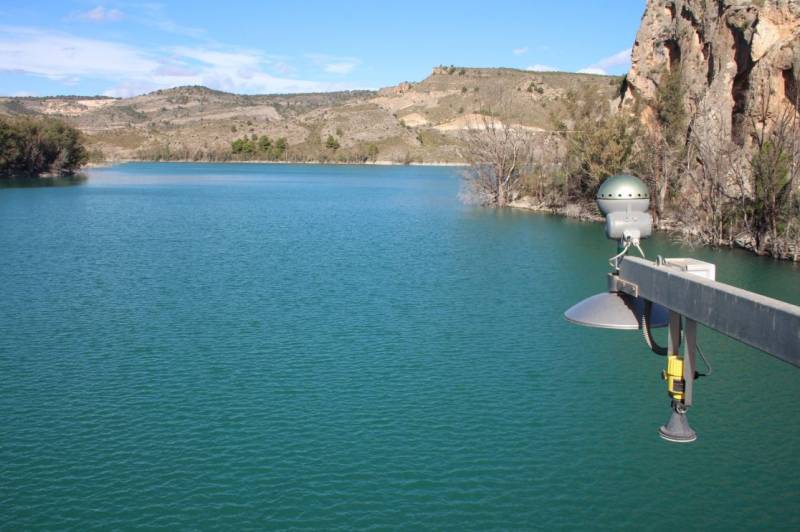 For Murcia, the recent heavy rains have finally given the parched Segura basin area some relief, with more than 30 hectometres of water flowing into the reservoirs and pushing the total reserves past 2,500,000 square metres. To put that in context, under normal conditions (whatever that means), 10,000 square metres of water is enough to sustain 7.5 million people for one day, and Murcia has a population of just 1.5 million.
For Murcia, the recent heavy rains have finally given the parched Segura basin area some relief, with more than 30 hectometres of water flowing into the reservoirs and pushing the total reserves past 2,500,000 square metres. To put that in context, under normal conditions (whatever that means), 10,000 square metres of water is enough to sustain 7.5 million people for one day, and Murcia has a population of just 1.5 million.Murcia’s regional parks and forests, especially those with coniferous trees, have soaked up the much-needed rain after a long dry spell. In places like Mula and Bullas, rainfall has tripled compared to last year, topping up aquifers and boosting river flows. Some reservoirs, like La Cierva, have doubled their capacity, while the Argos and Quípar reservoirs have seen solid gains, securing primary irrigation supplies.
The Permanent Drought Commission is meeting soon and might ease the existing water restrictions on farmers, which are still in place and currently include cuts of 40% for traditional irrigation and a whopping 57% for non-traditional irrigation. Some of the hardest-hit areas – mainly in the west of the Region and over into the parts of Almería which fall into the Segura basin area – have finally seen some decent rainfall.
While last week’s rain caused some disruption and destruction (Lorca estimates its damages at €30 million), farmers are crossing their fingers that by spring they’ll have fewer restrictions to deal with. Which, if the current spell of drizzly, grey weather continues as it is, looks likely.
The news has emerged of the municipalities in Murcia where rental prices have risen the most: San Pedro del Pinatar and Mazarrón have seen the biggest rent hikes, with San Pedro jumping up by 17.7% and Mazarrón by a staggering 27.5% in just one year. Los Alcázares isn’t far behind with a 12.5% increase. Unsurprisingly, these coastal spots are now some of the priciest places to rent in the region.
Meanwhile, Murcia city and Cartagena are seeing a more ‘moderate’ increase – 7.7% and 7%, respectively – but the real winner (or loser, depending on your perspective) is La Manga, where rent has hit a record-breaking €10.1/m². And it’s not just Murcia, either; across Spain, rental prices have soared by 11% in the past year, smashing previous records. Good news for property owners renting their homes out long-term, but bad news for anyone trying to find an affordable place to live!
Staying on the property front, there’s a palpable resurgence in resort development across Murcia. The money is flowing back in and the cranes are going back up. At El Valle Golf Resort, for instance, where Murcia city council is set to approve a major new housing project. Over 100 homes are planned, targeting an international crowd of mostly British and Dutch buyers, if past trends are anything to go by. The first phase will see six villas and 38 apartments built, with more to follow.
Murcia’s real estate market has been clawing its way back since the post-2008 collapse, when the property bubble burst, and developers are now cashing in on renewed interest. The Altaona urbanisation, also in central Murcia, has seen 100 licences approved in five years, and there’s even talk of reviving the long-dormant Sierra Golf resort in Finca Escobar, while Corvera is also experiencing a property boom. Expect not only rental prices to go up, but sales prices too as Murcia’s real estate market takes off once again.
Of course, those already living in some of the more established resorts might shout for those to be finished before new construction begins. Thankfully, on that front, Camposol is finally making progress on its long-delayed dual carriageway project. Mazarrón council has approved the repairs and completion of the road running through Sectors C and D, with a newly increased budget of €4.56 million.
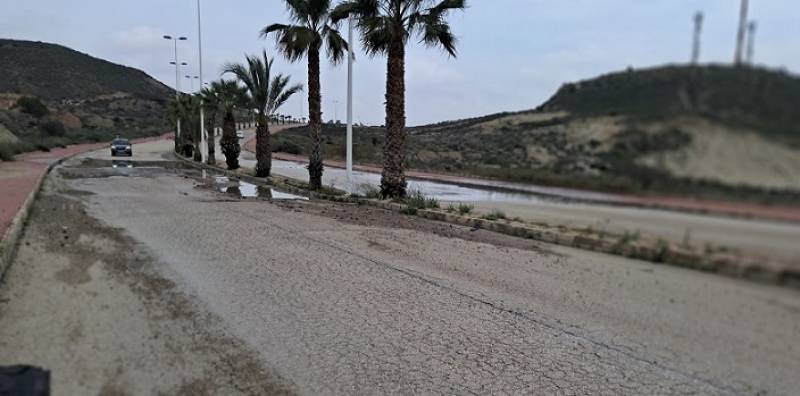
The project was originally launched in 2021 but got bogged down in legal disputes. Now, with court challenges dismissed and a worsening pothole situation after the heavy rains, there’s renewed urgency in the Town Hall to get it done.
At the same time, the procedure for the collection of notifications regarding Mazarrón Council taking over responsibility to complete the public elements of the Camposol urbanisation is continuing at a steady pace since volunteer groups stepped in to help out, and they will start on Sector D beginning this coming Tuesday, March 18.
There is good news for Cabo de Palos this week as much-loved Café Bar Yemanjá is reopening this Friday after a well-earned winter break. Owner Magdalena shut the doors just before Christmas, but she’s back just in time for the spring and summer crowds with her usual blend of yummy food and chilled vibe. Just be ready to fight for a table overlooking the port on sunny weekends!
Over in Los Alcázares, they’re gearing up for the annual Berber Raids fiestas, set to take place during Easter Week, which is just a month away now! The event, which commemorates the pirate attacks of the 16th and 17th centuries, has morphed into a massive mediaeval-themed party. With over 200 market stalls stretching 1.5km, dramatic re-enactments, parades and bizarre contests like the ‘Lanzamiento de Caldero’ pot-throwing competition, it’s no wonder last year’s event drew 150,000 visitors. This year’s highlights include live performances from music groups and various orchestras, and the town is expected to be buzzing with even more people than last year!
This weekend, Los Alcázares also has a Saint Patrick’s Day celebration taking place from March 14 to 17, while wine lovers can hop on the Wine Bus Tours from Murcia and Cartagena up to Bullas for the Vinarte Festival on March 15 and 16, where top chefs will be pairing gourmet dishes with the region’s finest wines (a convenient solution for anyone who doesn’t fancy choosing between indulging and driving!).
Don’t forget you can always check our EVENTS DIARY for more events and activities coming up soon in the Region of Murcia:
Spain
I’m sure I’m not alone in absolutely dreading the arrival of the electricity bill lately. Prices have been steadily climbing for the last couple of years and with the energy tax bonus scrapped at the beginning of 2025, practically every homeowner in Spain saw their monthly bill shoot up.
But, there is some good news on the horizon, as forecasts are suggesting that electricity prices might finally start to stabilise this year, although they’ll still be pretty high at around €75 per MWh in the wholesale market.
 One thing that’s really promising is that renewable energy is on the rise in Spain. In fact, it’s expected to make up around 42% of the country’s energy consumption in 2025. This could really help bring costs down and make energy prices more stable.
One thing that’s really promising is that renewable energy is on the rise in Spain. In fact, it’s expected to make up around 42% of the country’s energy consumption in 2025. This could really help bring costs down and make energy prices more stable.To help people who are struggling with their energy bills, the Spanish government has extended some really useful aid measures until the end of June 2025. If you’re a vulnerable consumer, you might be eligible for the Electric Social Bonus, which can give you a discount of up to 65% on your electricity bill.
There are also some great tax breaks available if you’re looking to make your home more energy efficient. You can get deductions of up to 60% on things like insulation, double glazing and energy-efficient appliances. And, if you’re thinking of buying an electric car, you can get a 15% deduction on the purchase price and charging points.
So, what can you do to save money on your electricity bills? Some tips including using energy-intensive appliances during off-peak hours, like at night or on weekends, when the rates are lower; making sure you’re using energy-efficient appliances and lighting; keeping your home at a comfortable temperature; installing solar panels to generate your own electricity; reviewing your contract regularly to make sure you’re getting the best deal and switching to a different supplier if you find a better offer; and adopting simple habits like turning off lights and appliances when you’re not using them.
If we think pricey electricity is a problem, we should really count ourselves lucky to have a home to pay bills for, as millions of people in Spain are finding it next to impossible to get a foot on the property ladder. The combination of rising prices and low wages has made it increasingly difficult for young people to leave the family nest, with many not moving out until their 30s.
In an effort to provide more affordable housing options, the Social Security department has announced that it will be auctioning off more than 300 properties across Spain at bargain basement prices.
These properties, which include apartments, houses and land, have been seized by the General Treasury of Social Security from companies or individuals with outstanding debts. Many of them are available for less than €10,000, making them a tantalising prospect for those looking to get on the property ladder.
If you’re interested in taking part in the auction, you can browse the full list of properties online, where you can filter by province and access more detailed information about each one.
Some of the properties on offer are absolute steals, such as a 45m² apartment in La Robla (León) which is going for €5,000, or a 60m² flat in Alhama de Murcia, which is priced at €10,000.
There’s also a 50m² apartment in Alicante available for €12,000 and a 40m² flat in Puente Genil (Córdoba), which can be had for €6,000.
These prices are a far cry from the usual market rates, making them a rare opportunity for those looking to find an affordable place to call home.
It’s hard to believe it’s been over a year and a half since Spain introduced its groundbreaking Animal Welfare Law. While many of the new rules kicked in right away, a few key measures were put on hold until the details could be ironed out. One of the most important ones is the central registry for pets, which will give every cat, dog and ferret its own unique ID number.
The wait is finally over, though – the government has just announced that the national pet registry is launching soon. This is huge news, especially considering Spain has the highest number of abandoned and lost pets in Europe. The goal of the registry is to bring those numbers down and make sure our furry friends are kept safe and sound.
 As Rosa Martínez, Secretary of State for Social Rights, put it, “an identified animal is a protected animal.”
As Rosa Martínez, Secretary of State for Social Rights, put it, “an identified animal is a protected animal.”And that’s exactly what this registry is all about. Right now, every dog, cat and ferret in Spain is required to be microchipped, but each region has its own way of keeping track of pets. The new system will change that, creating a nationwide database that stores all the vital info, like owner contact details, microchip numbers and medical history.
So, what does this mean for pet owners? Well, for starters, if your pet ever goes missing while you’re on vacation or gets lost in a different part of the country, it’ll be much easier to get them back. And if your animal needs medical attention while you’re away, the vet will be able to access their entire medical history in an instant.
Before the registry becomes law, the government is opening up a 15-day public consultation period to gather feedback and ideas from animal lovers, vets and organisations.
Alicante
The Cheltenham Festival was in full swing this week, which can only mean one thing – thousands of Brits are ditching the chilly Gloucestershire countryside for the sun-kissed shores of Benidorm! Believe it or not, the Spanish resort city has become the go-to destination for UK racing enthusiasts who want to enjoy the thrill of the festival without breaking the bank.
Benidorm’s New Town has been buzzing with excitement as festival fans descended upon the city’s bars and pubs to cheer on their favourite horses.
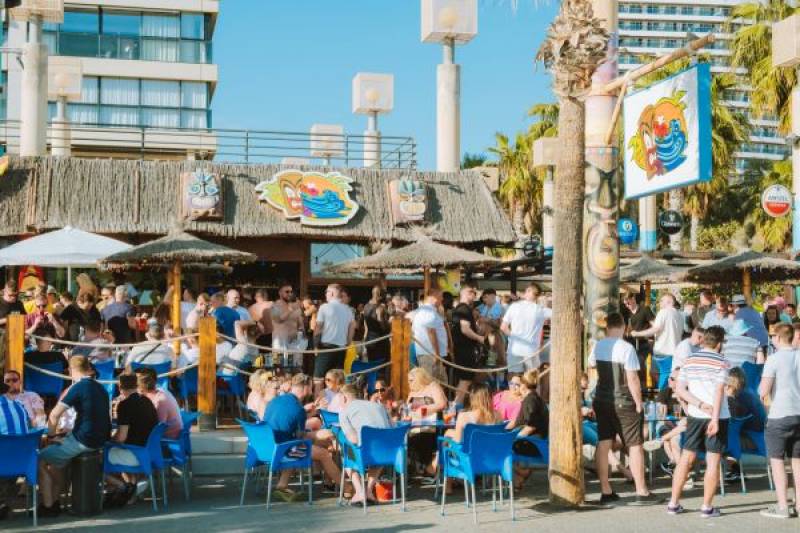
The Winning Post bar was the place to be this year, with its in-house bookmaking and lively atmosphere. By 9.30am on the first day, the bar was packed with patrons enjoying hearty breakfasts and pints while poring over the race schedules.
According to owner Colleen Holm, “Cheltenham’s always been big for us, but it’s really taken off in the last six or eight years.”
So, what’s behind this mass migration to Benidorm? For Timothy King and his friends, it’s all about affordability. “Going to the festival is just too expensive now, and it’s too busy,” he said.
“This is our first time in Benidorm, and I’d recommend it to anyone. It’s beautiful, friendly and clean.”
With pints as cheap as €2 and five-bottle beer buckets for €6.50, it’s no wonder Benidorm is becoming the festival destination of choice.
As the sun sets and the races conclude, the party in Benidorm is only just getting started. The city’s vibrant nightlife beckons, with everything from tribute acts to lively karaoke sessions. For many British tourists, this blend of leisure and excitement makes Benidorm the perfect destination to celebrate the Cheltenham Festival without breaking the bank.
But amidst all the fun and sun in Benidorm, there’s a more serious issue brewing a little further south in Orihuela Costa. A string of burglaries has been reported in the La Zenia and Playa Flamenca areas, with more than ten break-ins reported in March alone.
You might remember the ‘Rucksack Burglar’ who terrorised Playa Flamenca homeowners around this time last year. Despite clear photos and video footage, the thief managed to evade the authorities for more than a year. Now, it seems like an organised gang is behind the latest burglaries, using similar methods to target homes in the area.
With many locals complaining that the police aren’t stepping up to the mark, resident associations and crime watch groups are encouraging home owners to do what they can to protect their properties.
First, consider installing security cameras, as they can deter potential burglars and provide valuable evidence if a break-in occurs. Alarm systems are also a great idea, as a loud alarm can scare off intruders and alert your neighbours to suspicious activity.
Motion-activated lights are another great way to keep your home secure. They can make it difficult for burglars to approach your home without being seen and they’re a great deterrent. Of course, it’s also essential to make sure all your doors and windows are secure – reinforce any weak entry points to prevent easy access.
But security isn’t just about gadgets and gizmos – it’s also about community. By looking out for each other and sharing information, you can help prevent future break-ins.
If you’ve experienced or witnessed a recent burglary, please share your story with your neighbours and on local social media groups. This will help raise awareness and encourage others to take steps to protect their homes.
This is especially important this weekend when virtually the whole of the Orihuela Costa comes out in force to celebrate its highly anticipated St Patrick’s Day Parade, which returns for its 12th spectacular edition this year!

The Cabo Roig St Patrick’s Day Parade was voted the best-organised festival in the Vega Baja in 2024, is one of the largest in Europe, attracting around 25,000 spectators each year. It is the biggest Irish celebration on the Orihuela Costa and promises an unforgettable day packed with music, parade floats, entertainment, bacon and cabbage, and, of course, plenty of Guinness! Come along and show your support!
For other events and activities happening in the area, check out the What’s On page of Alicante Today or join the Costa Blanca What’s On and Where to Go Facebook group
Andalucía
Andalucía has had a bit of a week, dealing with the fallout from Storm Jana and now Storm Konrad. Over 1,000 incidents were reported across the autonomous community since the storms first hit, and the numbers keep rising. Seville has taken the brunt of it, with flooded roads, half-submerged houses and even a few sinkholes thrown in for good measure, while in Jaén and Córdoba rockfalls and flooded basements have kept emergency services busy.
Málaga and Cádiz haven’t fared much better, with hundreds of reports of damage. The peak of the madness came last Saturday, March 8, when nearly 500 incidents were logged in a single day. One of the worst effects of the storm was when a major landslide wiped out a chunk of the Costa del Sol’s A-397, the vital road connecting Ronda to the coast.
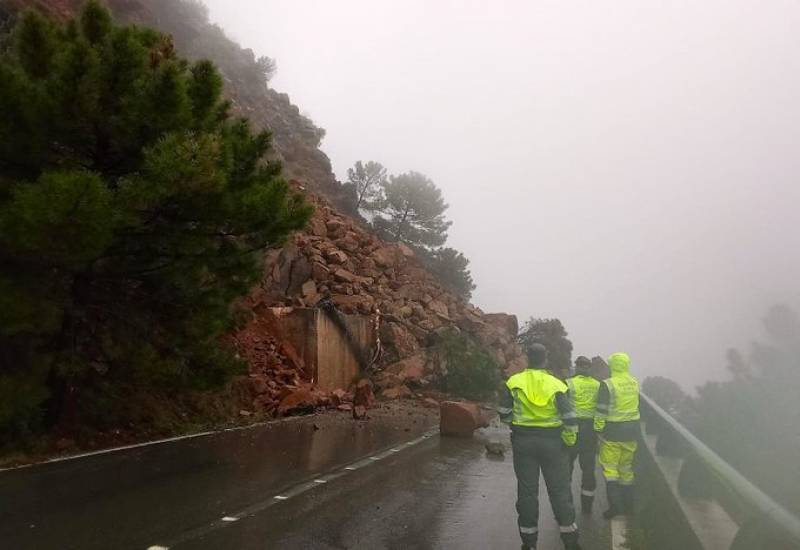 Authorities have shut down the road completely after a collapse at kilometre 31, near Benahavís. With 7,500 vehicles accustomed to using this stretch daily, finding an alternative route isn’t easy. Detours through Gaucín and Manilva or Ardales and Coín have seen travel times almost double, while a quick fix is out of the question. Engineers say the damage is so severe that they can’t even think about rebuilding until they stabilise the sheer 200-metre-high slope that gave way. It’s going to be months before this road is operational again, so for now, drivers will have to grit their teeth and accept the detours.
Authorities have shut down the road completely after a collapse at kilometre 31, near Benahavís. With 7,500 vehicles accustomed to using this stretch daily, finding an alternative route isn’t easy. Detours through Gaucín and Manilva or Ardales and Coín have seen travel times almost double, while a quick fix is out of the question. Engineers say the damage is so severe that they can’t even think about rebuilding until they stabilise the sheer 200-metre-high slope that gave way. It’s going to be months before this road is operational again, so for now, drivers will have to grit their teeth and accept the detours.But if you thought being stranded on the road was bad, spare a thought for the Brits who got abandoned in northern Spain this week when a Ryanair flight from Málaga to Manchester had to make an emergency landing after a passenger fell ill. Unfortunately, in a classic case of bad timing, air traffic control had already clocked off for the night so the passengers were left to fend for themselves, scrambling for accommodation.
Ryanair, ever the beacon of customer service, did at least say they could claim back their expenses if they had receipts. The next afternoon, the plane finally took off again and everyone managed to get back to Manchester, a mere 20 hours later than originally planned.
Back in Málaga, the taxi wars have turned violent. A licensed driver was hospitalised after being smacked over the head with an iron bar in an unprovoked attack by an unlicensed rival at the airport. The so-called ‘pirate’ taxi drivers have been causing a stir for a while, but this latest assault has pushed tensions to a new level.
Local taxi associations are demanding better police protection, but so far the authorities haven’t exactly been leaping to their aid. Police are investigating, but considering how long these turf wars have been dragging on, licensed drivers aren’t holding their breath for a swift resolution.
In Almería, TUI Airways has announced they are axing flights from Manchester as part of a broader cull of their summer 2025 routes. Spain, Greece, Turkey and Cape Verde are all losing connections from UK airports, but luckily Ryanair is still flying to Almería from Manchester this summer (assuming they don’t leave you stranded somewhere random along the way).
Finally, Seville Airport has been celebrating record-breaking passenger numbers, with over 9 million people passing through its vaulted halls in 2024. But despite its growing popularity, the transport links to the city remain frustratingly inadequate.
Unlike other major Spanish cities with dedicated rail links to their airports, Seville still relies on a bus service, taxis or private cars to shuttle passengers between the airport and the train station. Plans for a train connection have been talked about for years, but progress has been non-existent. The central government in Madrid even dismissed a completed feasibility study and instead launched its own (at double the cost!) only to go radio silent about any actual developments.
At the same time, they’re fast-tracking a €35 million high-speed rail project between Seville and Huelva, which, while nice, doesn’t exactly help stranded passengers at the airport. As Seville cements its reputation as a major tourist and business hub, vying for more non-European flights such as China and the US, the lack of a modern transport solution is becoming more and more embarrassing.

You may have missed…
- Spain’s full moon in March 2025 will turn the sky red with a total lunar eclipse.
Look to the skies tonight (if it’s not too cloudy where you are) for the chance to see a full blood moon! - UK state pension in Spain—make sure you’re receiving your full entitlement!
If you’re a UK expat living in Spain and claiming a state pension from Britain, you may be missing out on your full entitlement due to gaps in your National Insurance (NI) record. The good news is that you can still top up your state pension by paying voluntary NI contributions, but you need to act quickly as the deadline to do so is looming. - New ‘super-Earth’ discovered in habitable zone of nearby star.
A ‘super-Earth’ has been found in the habitable zone of a “nearby” red dwarf star, just 59 light-years away, boosting hopes in the hunt for planets that could support life (one light-year is roughly 9.46 trillion kilometres!). - Spanish researchers reconstruct features of ancient hominid.
A newly discovered fossil in Atapuerca has allowed scientists to reconstruct the face of Western Europe’s oldest known hominid, revealing a more primitive species than previously thought. - March 19 is a bank holiday in Murcia and Valencia.
March 19, Father’s Day, known in Spain as Día del Padre, is only a holiday in two places: the Region of Murcia and the Valencian Community, which includes the popular city of Alicante.
That’s all for this week. Thanks for reading and we’ll be back next week
’Til then!
Contact Murcia Today: Editorial 000 000 000 /
Office 000 000 000
















